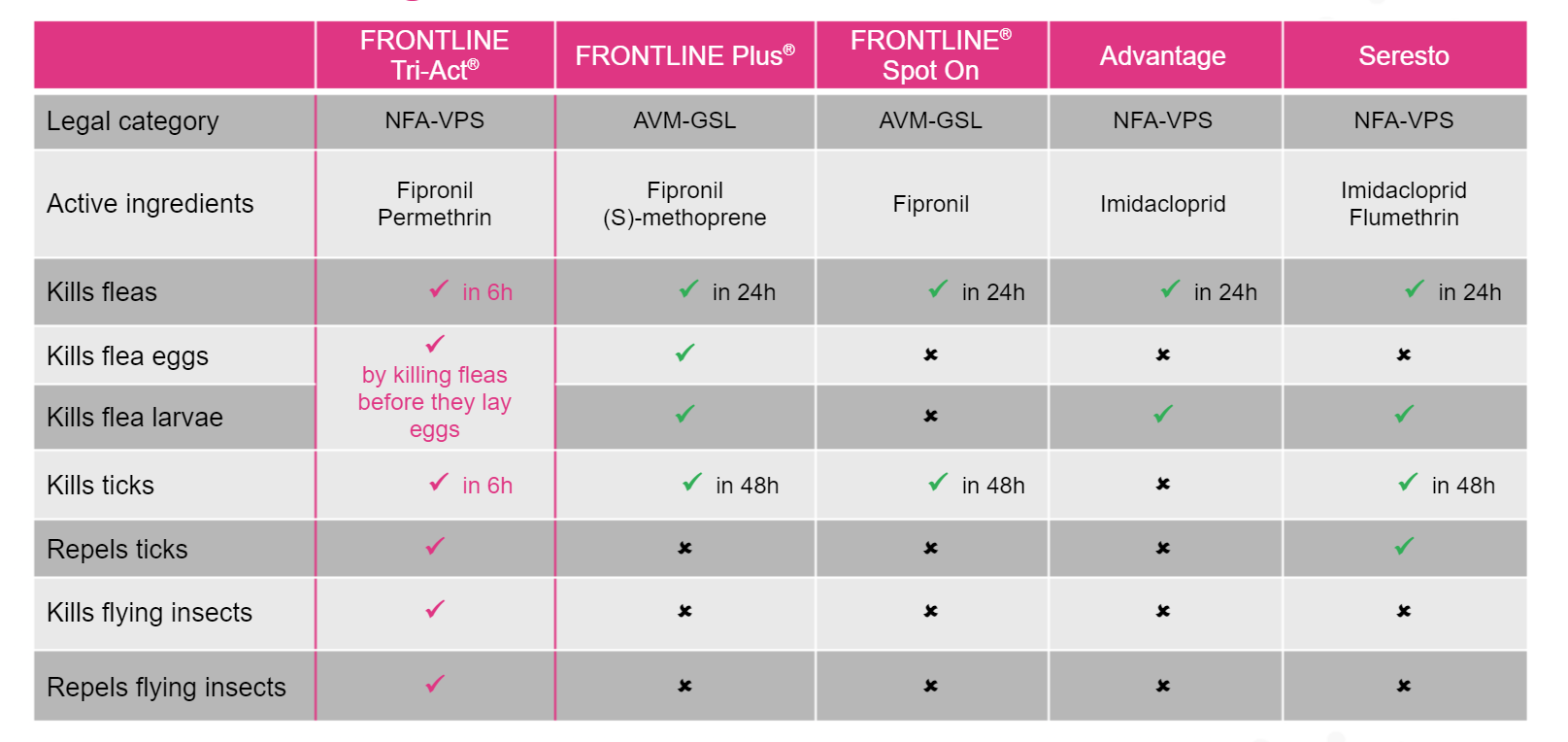Why do I still see fleas after my animal has been treated for them?
Posted by Darren Walton on 24th Jul 2021
Browse all flea treatments for dogs or flea treatments for cats and rabbits.
Often even after treating with a suitable flea treatment you will still see flea’s on your animal. However, this does not mean that the treatment has not worked or that the fleas are immune – the reasons are fairly simple
Why do I still see fleas after I have treated my pet for them?
During the warmer months fleas can be a particular nuisance and even harder to get rid of. Often even after treating with a suitable flea treatment you will still see flea’s on your animal. However, this does not mean that the treatment has not worked or that the fleas are immune – the reasons are fairly simple:
- Fleas are hatching in your home and re-infecting your pet.
- Your pet picked up a ‘hitch-hiker’ flea.
- Treated fleas become more active before they die – making them more visible.
Solving a flea problem can be much more difficult than many people expect. In the case of a severe flea infestation it can take several months of diligent treatment of both your animals and your home to get on top of the problem. The process can be hugely frustrating and often feels like fighting a losing battle. The old saying ‘prevention is better than cure’, is especially true in this instance – regular application of a suitable flea treatment will help prevent your home or pet becoming infested in the first place. Understanding flea treatments demonstrates the advantage of preventing infestation, rather than trying to cure it once it has taken hold.
Browse all flea treatments for dogs and flea treatments for cats
Fleas are hatching in your home:
Generally speaking the majority of the lifecycle of the flea is spent in the environment rather than on the animal itself. Female fleas can lay up to 50 eggs per day. Eggs,larvae and pupae are much more numerous than adult fleas. When the temperature and humidity are right flea eggs will be constantly hatching out. New adult fleas will also constantly emerge from the pupae stage when the conditions are right. The new adult fleas will only hatch when a host animal is close by, as they need a blood meal to survive.
If your pet is treated with a suitable flea control product the new adult fleas will usually be killed within 24hrs, this will help control the flea infestation as it will reduce the likelihood of the flea laying eggs and the cycle beginning anew.
Household Flea Sprays
To get on top of the home infestation more quickly a suitable household flea spray should be used such as Frontline Homegard, Indorex Flea Spray etc. This kills the fleas and larvae in the environment and will prevent eggs and larvae from developing for up to 12 months. Flea infestations can take several weeks. Treating the house is essential as the pupae stage of fleas as pupae, which can survive for a year within the home, will still develop into adult fleas.Hot humid conditions and vibration can trigger them to hatch. The adulticide in household flea sprays will then kill the adult fleas typically within the first couple of months. To effectively use a household flea spray, allowing the pet to roam around the house, regular vacuuming for the first 7 days after application of the spray, causes vibrations to hatch the pupae which are in turn removed by the vacuum.
Using a flea control product which contains an Insect Growth Regulator.
Products such as Frontline Plus or Fipnil Plus, will also help treat the immediate environment (dog beds etc) but a household flea spray should still be used in order to treat areas the pet rarely visits.
‘Hitch-Hiker’ Fleas:
Even when treated with a suitable flea control product such a Frontline Plus,
Advantage etc it is still possible for your pet to pick up new fleas from the outside environment or other animals. Flea eggs and larvae can also be brought into the home on shoes or clothing. Provided the animal has been treated correctly, these new fleas will be killed within 24hrs preventing them from laying eggs and re-establishing a population in the home.
Treated Fleas Become Hyperactive Before Death:
The most common ingredient in flea treatments – fipronil – makes flea’s hyperactive before they die. This will actually make them more visible on the pet as they will come to the surface of the coat, this can also increase the irritation to the pet for a short time and make them scratch more. No flea product kills instantly – the flea has to come into contact with the insecticide, absorb it and will then start to be affected which can take up to 24hrs. No flea treatment will prevent fleas from jumping onto your dog – regardless of which treatment you chose you will still see flea’s on your pet for a period of up to 24hrs.

For more information you can view our blog article The Comprehensive Guide to Parasite Management in Cats and Dogs.

